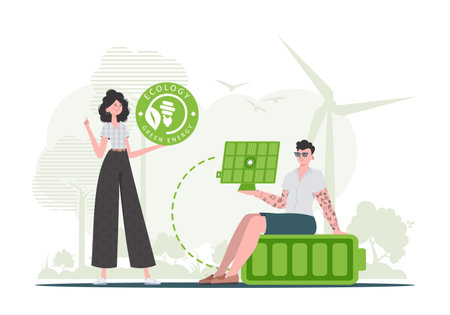1. Understanding the American Wellness Market
To build a successful wellness app for the American market, its essential to understand what American users are looking for and what matters most to them when it comes to health and wellness. The United States has a diverse population with unique cultural preferences, lifestyle trends, and health concerns that shape how people engage with wellness technology.
Latest Trends in American Wellness
Wellness in the U.S. is more than just physical fitness. Many Americans now prioritize holistic health, which includes mental well-being, nutrition, sleep quality, stress management, and mindfulness practices. Recent trends show a growing interest in:
- Mental Health Support: Mindfulness, meditation, and therapy features are highly valued.
- Personalization: Users expect tailored recommendations based on their goals, habits, and health data.
- Fitness Variety: Americans enjoy a mix of workouts such as HIIT, yoga, pilates, cycling, and running challenges.
- Community Engagement: People want to connect with friends or like-minded users for motivation and accountability.
- Wearable Integration: Compatibility with devices like Apple Watch and Fitbit is becoming a must-have.
Cultural Preferences and User Expectations
Cultural values play a big role in shaping user expectations. Americans value convenience, privacy, clear results, and user-friendly experiences. They also appreciate apps that fit into busy lifestyles and provide quick wins or visible progress tracking. Localization is important—using language, units of measurement (such as miles instead of kilometers), and references familiar to an American audience makes your app feel native.
Key Preferences Table
| User Preference | Description |
|---|---|
| Personalization | Customized plans based on individual goals and health data |
| Motivation & Rewards | Badges, streaks, and incentives to encourage consistent use |
| Privacy & Security | Clear privacy policies; secure handling of personal information |
| Simplicity & Convenience | User-friendly navigation; fast onboarding; minimal friction in daily use |
| Integration with Devices | Syncing with popular wearables and health platforms (Apple HealthKit, Google Fit) |
Common Health Concerns in America
Your app should address prevalent health concerns among Americans to boost relevance. Some key areas include:
- Obesity and Weight Management: Tools for tracking calories, activity levels, and weight loss progress are sought-after.
- Mental Health Issues: Stress reduction features and access to mental health resources add significant value.
- Lifestyle Diseases: Support for managing conditions like diabetes or hypertension through healthy habits is important.
- Poor Sleep Quality: Sleep tracking and improvement tips are widely appreciated.
By aligning your app’s features with these trends and preferences, you’ll be better positioned to meet the needs of American users and stand out in a crowded marketplace.
2. Essential Features for a U.S. Wellness App
Must-Have Functionalities to Attract and Engage American Users
When designing a wellness app for the U.S. market, its important to focus on features that match the lifestyles and expectations of American users. Here are some essential functionalities your app should include:
Fitness Tracking
Americans love tracking their fitness progress, whether theyre running, cycling, or hitting the gym. Your app should offer:
- Step and activity tracking
- Workout logging (strength, cardio, yoga, etc.)
- Personalized fitness goals and reminders
- Progress charts and achievements
Mental Health Tools
Mental wellness is a growing priority in the U.S. Consider adding:
- Guided meditation sessions
- Daily mood tracking
- Stress management exercises
- Access to mental health resources or licensed professionals
Nutrition Plans
A balanced diet is key to well-being. Offer features such as:
- Meal planning and healthy recipes
- Calorie and macronutrient tracking
- Barcode scanner for food labels (very popular in America)
- Integration with grocery delivery services like Instacart or Amazon Fresh
Community Engagement
Building a sense of community can boost user motivation. Include:
- User forums and discussion boards
- Group challenges (e.g., step competitions)
- Social sharing to platforms like Facebook and Instagram
- Peer support messaging
Integration with Popular Wearables
Many Americans use devices like Apple Watch, Fitbit, and Garmin. Make sure your app can sync data with these wearables:
| Wearable Device | Features to Sync |
|---|---|
| Apple Watch | Heart rate, workouts, steps, calories burned |
| Fitbit | Sleep tracking, activity stats, nutrition logs |
| Garmin Devices | Cycling/running stats, GPS routes, heart rate zones |
User-Friendly Design and Personalization
An intuitive interface is crucial. American users expect easy navigation, clear visuals, and personalized recommendations based on their habits and preferences.
The Essential Feature Checklist for Your U.S. Wellness App:
- Fitness tracking & goal setting
- Mental health resources & mood tracking
- Diverse nutrition plans & food logging tools
- Lively community engagement options
- Smooth wearable integration (Apple Watch, Fitbit, Garmin)
- User-friendly design with personalization features

3. Localized User Experience and Design
Intuitive UX/UI for American Users
When building a wellness app for the American market, intuitive user experience (UX) and user interface (UI) design are key. Americans appreciate apps that are easy to navigate, visually appealing, and efficient. Avoid cluttered screens and use familiar layouts—think clear menus, simple icons, and logical flows that guide users smoothly from one section to another.
Language Choices and Tone
The language you use should feel natural to Americans. Use everyday English, avoid jargon, and keep instructions short and friendly. Consider regional language preferences too; for example, use “mom” instead of “mum,” “vacation” instead of “holiday,” and so on. Here’s a quick reference:
| British English | American English |
|---|---|
| Lift | Elevator |
| Holiday | Vacation |
| Mum | Mom |
| Programme | Program |
| Colour | Color |
Inclusive Content for a Diverse Audience
The United States is highly diverse. Your app content should reflect this by representing different backgrounds, lifestyles, and body types. Include photos, illustrations, and stories that show people of various races, ages, abilities, and genders. When offering wellness advice or exercise routines, provide options for beginners, seniors, or users with disabilities.
Culturally Relevant Motivational Strategies
Motivation works best when it feels personal. For American users, consider these culturally relevant strategies:
- Goal Setting: Americans often respond well to goal tracking with visible progress bars or streaks.
- Community Features: Many like to join groups or challenges with friends—think leaderboards or local wellness communities.
- Rewards: Offer badges or points redeemable for discounts on popular American brands.
- Cultural Events: Tie challenges or content to holidays like Thanksgiving or New Year’s resolutions.
Example: Motivational Features Table
| Feature | Description |
|---|---|
| Streak Tracker | Keeps users motivated by showing daily progress (e.g., “7-day meditation streak!”) |
| Challenge Groups | Create 30-day fitness challenges tied to American holidays or seasons. |
| Loyalty Badges | Award badges for milestones (e.g., “First 5K Run!”) that can be shared on social media. |
| Aspiration Boards | Let users set personal health goals with visual boards popular in the US. |
An app tailored with these features will feel welcoming, relatable, and motivating for American users—helping your wellness platform stand out in a crowded market.
4. Monetization Strategies That Work in the U.S.
Freemium Subscriptions
The freemium model is hugely popular among American consumers. With this approach, users get access to basic wellness features for free, but need to pay for premium content like personalized workout plans, expert video sessions, or deeper analytics. This lets users try your app risk-free before deciding to upgrade, which builds trust and encourages long-term engagement.
Freemium Model Breakdown
| Feature | Free Users | Premium Subscribers |
|---|---|---|
| Basic Tracking | ✔️ | ✔️ |
| Personalized Plans | ✔️ | |
| Expert Q&A Sessions | ✔️ | |
| No Ads Experience | ✔️ | |
| Community Groups | Limited Access | Full Access |
In-App Purchases (IAP)
In-app purchases are a flexible way to let users buy exactly what they want—like guided meditation packs, new workout routines, or healthy recipe collections. Americans love customizing their experiences, so offering one-off purchases or bundled content can boost your revenue while giving users more value.
Partnerships with Health Professionals
The American market values expert advice and credibility. Partnering with nutritionists, fitness trainers, or therapists allows you to offer exclusive consultations or webinars as paid services within your app. This not only generates income but also increases user trust and engagement.
Brand Collaborations and Sponsorships
Brand collaborations are another effective strategy in the U.S. market. Wellness brands, athletic apparel companies, or healthy food businesses often seek digital partners to reach health-conscious consumers. You can integrate branded challenges, sponsored content, or special discounts into your app—creating win-win partnerships that drive revenue without disrupting the user experience.
Comparison of Monetization Strategies for U.S. Wellness Apps
| Strategy | User Appeal | Main Revenue Source | Cultural Fit (U.S.) |
|---|---|---|---|
| Freemium Subscription | High (try before buying) | Monthly/annual fees | Very strong (Americans love flexibility) |
| In-App Purchases | Medium-High (pay for what you want) | One-time payments/bundles | Strong (customizable experience preferred) |
| Health Professional Partnerships | High (trust in experts) | Consultation fees/webinars/events tickets | Very strong (Americans value credentials) |
| Brand Collaborations/Sponsorships | Medium (added perks/discounts) | Sponsorship fees/affiliate sales/ad revenue | Strong (open to branded content if relevant) |
A Winning Approach: Mix and Match Monetization Methods
The most successful wellness apps in the U.S. use a blend of these monetization strategies. Start with a solid freemium model, then layer on in-app purchases, expert partnerships, and brand collaborations as your user base grows. This keeps your revenue streams diverse and ensures you’re meeting the needs—and expectations—of American users.
5. Maximizing User Retention and Growth
Building a successful wellness app for the American market means more than just getting downloads; it’s about keeping users engaged and encouraging steady growth. Let’s break down some key tactics that can help your app stand out and retain users for the long haul.
Loyalty Programs That Keep Users Coming Back
Americans love rewards! A well-designed loyalty program motivates users to engage regularly with your wellness app. Consider offering points for daily logins, completed activities, or sharing progress with friends. Points can be exchanged for in-app perks, discounts on wellness products, or exclusive content.
| Loyalty Program Idea | User Reward |
|---|---|
| Daily Check-In Streaks | Bonus points or badges |
| Referral Bonuses | Free month of premium features |
| Challenge Participation | Exclusive content unlocks |
Push Notifications: Friendly Reminders Without Being Annoying
Push notifications are a direct way to re-engage users, but they need to strike the right balance. Use personalized messages that encourage healthy habits, remind users of their goals, or notify them of new features and challenges. Always give users control over notification preferences to avoid overwhelming them.
Examples of Effective Push Notifications:
- “You’ve almost hit your weekly meditation goal—just one more session to go!”
- “Don’t forget to log today’s workout and earn extra points.”
- “A new mindfulness challenge starts tomorrow! Ready to join?”
User Feedback Loops: Listen and Improve
Actively collecting user feedback shows you care about your community and helps guide product improvements. Implement easy-to-use feedback forms, quick polls after key actions, or in-app surveys. Responding to user suggestions and highlighting changes based on their input builds trust and loyalty.
Ways to Gather Feedback:
- In-app quick surveys after feature use
- Email follow-ups asking about user experience
- A dedicated “suggestion box” section in the app menu
Leveraging Social Media for Organic Growth
Social media is a powerful tool for both engagement and organic growth. Encourage users to share their milestones or achievements directly from your app to platforms like Instagram, Facebook, or X (formerly Twitter). Create branded hashtags or monthly challenges that make sharing fun and rewarding.
| Social Media Tactic | Benefit |
|---|---|
| User-Generated Content Challenges | Boosts brand visibility through authentic stories |
| Shareable Progress Badges | Makes it easy for users to celebrate wins publicly |
| Community Groups (e.g., Facebook Groups) | Fosters peer support and ongoing engagement |
Tip:
Add built-in sharing options and encourage hashtags like #WellnessWins or #MyHealthyJourney to help users feel part of a bigger movement while promoting your app organically.

